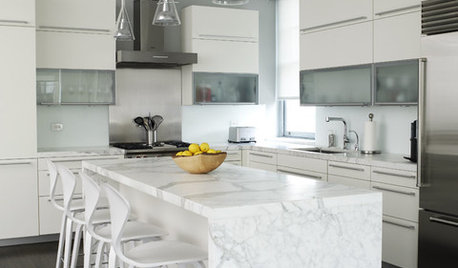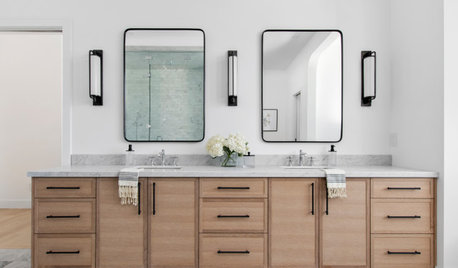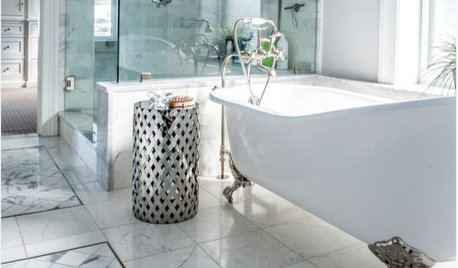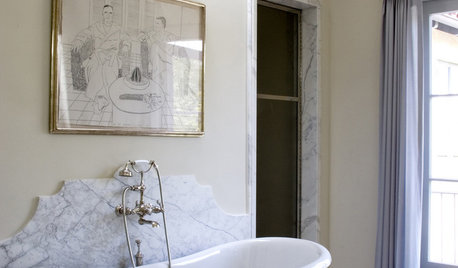Butter stain?? on Carrara marble
sweetbabyjames5
12 years ago
Related Stories

REMODELING GUIDESCarrara vs. Calacatta Marble: What Is the Difference?
The answer is in the color and veining of these popular Italian marbles
Full Story
HOUSEKEEPINGHow to Clean Marble Countertops and Tile
Acidic solutions can damage your marble surfaces. Here’s how to keep marble looking clean and amazing
Full Story
REMODELING GUIDESWhy Marble Might Be Wrong for Your Bathroom
You love its beauty and instant high-quality appeal, but bathroom marble has its drawbacks. Here's what to know before you buy
Full Story
KITCHEN DESIGNUsing White Marble: Hot Debate Over a Classic Beauty
Do you love perfection or patina? Here's how to see if marble's right for you
Full Story
SHOP HOUZZHouzz Products: How to Create a Classic Look for the Bath
Try one of these 4 enduring styles with white Carrara marble, oil-rubbed bronze, ocean motifs or modern curves
Full Story
HOUZZ TOURSHouzz Tour: Life in Italy Inspires a California Renovation
Carrara marble countertops, colors from nature and midcentury modern style feature in a Cape Cod–style home's makeover
Full Story
MATERIALS10 Modern Marble Looks
Marble has broken free of the standard kitchen countertop slab and is showing up on bathtub backsplashes, modern dining tables and more
Full Story
KITCHEN DESIGNKitchen Counters: Elegant, Timeless Marble
Ever classic and with unrivaled beauty, marble countertops bespeak quiet luxury in the kitchen — with a few caveats
Full Story
KITCHEN DESIGNGreat Material: Milky Marble
How to add a little or a lot of beautiful white marble to your kitchen, bath and more
Full Story
STONEPolish Your Style With Marble
You can introduce this stone’s cool elegance into your room in ways large and small
Full Story









batmansmama
angie_diy
Related Professionals
King of Prussia Kitchen & Bathroom Designers · La Verne Kitchen & Bathroom Designers · North Versailles Kitchen & Bathroom Designers · Ossining Kitchen & Bathroom Designers · Peru Kitchen & Bathroom Designers · Bremerton Kitchen & Bathroom Remodelers · Glendale Kitchen & Bathroom Remodelers · Islip Kitchen & Bathroom Remodelers · Kuna Kitchen & Bathroom Remodelers · Park Ridge Kitchen & Bathroom Remodelers · Red Bank Cabinets & Cabinetry · Vermillion Cabinets & Cabinetry · North Plainfield Cabinets & Cabinetry · Ardmore Tile and Stone Contractors · Brentwood Tile and Stone ContractorsStacey Collins
Buehl
jsceva
Stoneshine
brickeyee
blondelle
Stoneshine
breezygirl
angie_diy
brickeyee
Stoneshine
brickeyee